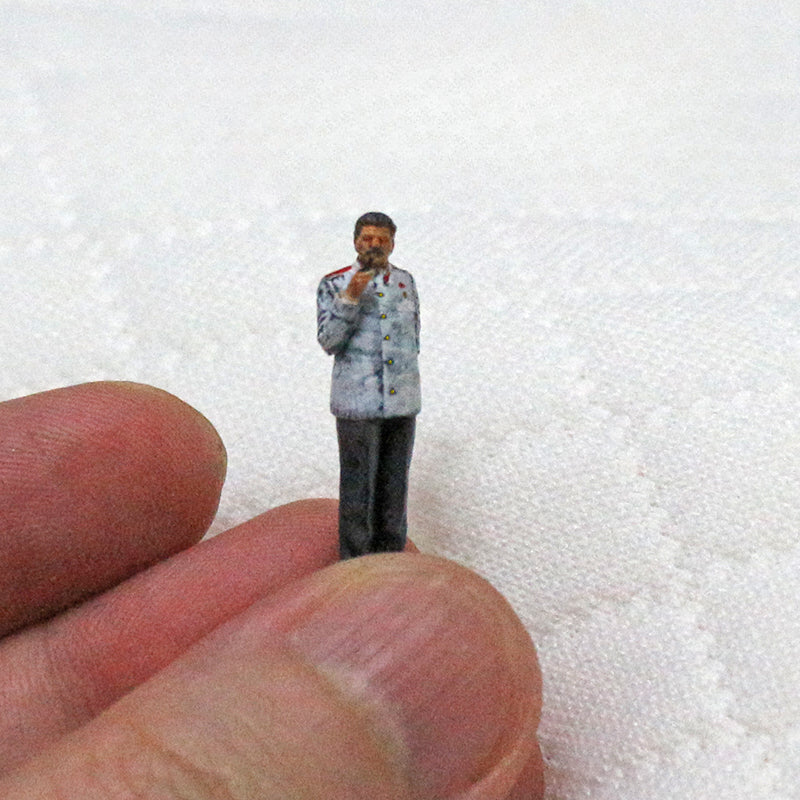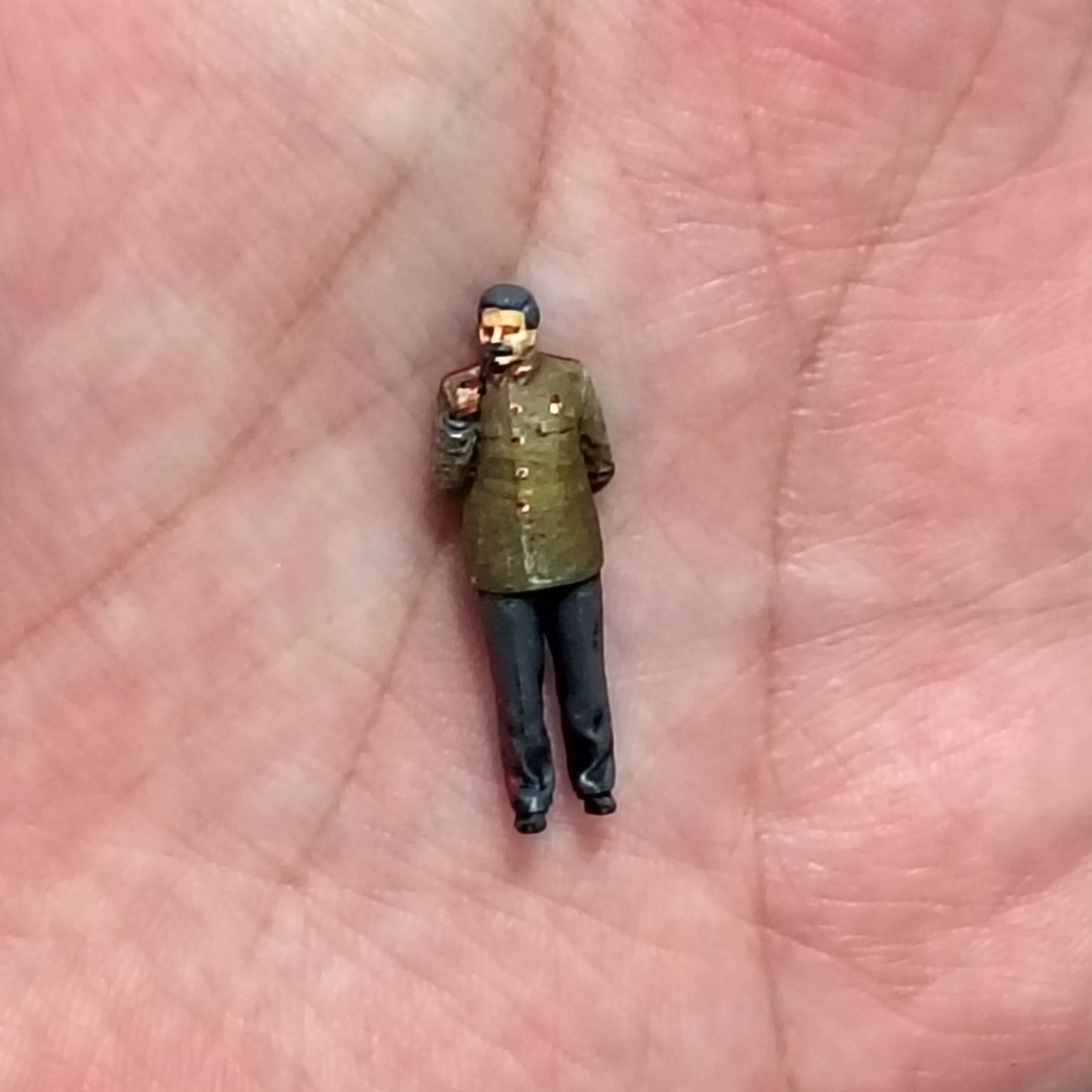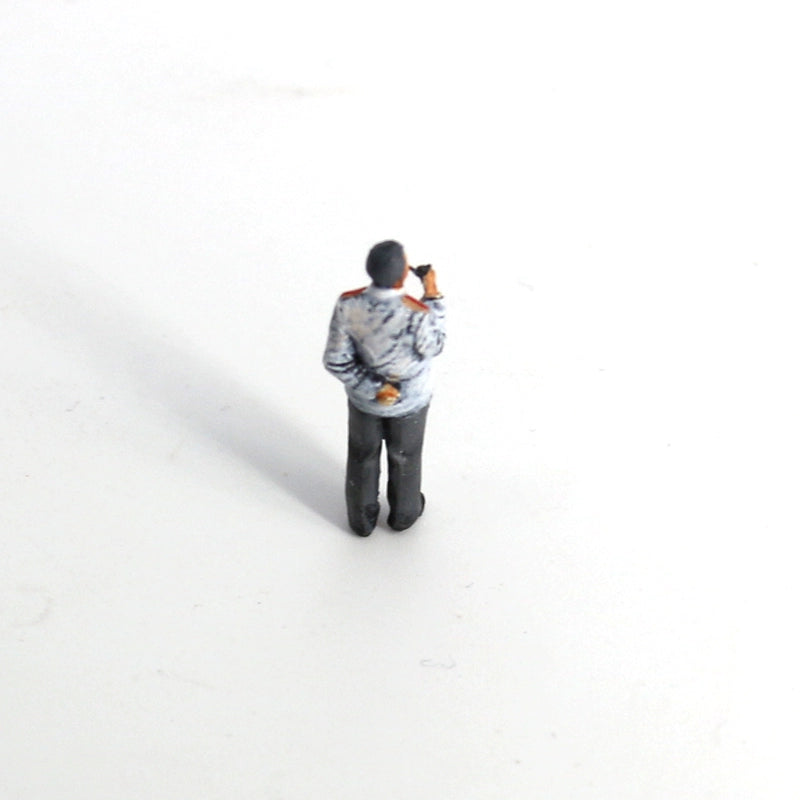old boy hobby
1/72 Scale Joseph Stalin Miniature Painted Figurine Diorama
1/72 Scale Joseph Stalin Miniature Painted Figurine Diorama
Couldn't load pickup availability
- pre-painted, ready to display
- material: plastic
- scale: 1/72
- size: approximate 1"
- note: this is a hand-made item, sometimes it takes longer than usual
Joseph Vissarionovich Stalin (born Dzhugashvili; 18 December [O.S. 6 December] 1878 – 5 March 1953) was a Soviet politician and revolutionary who was the longest-serving leader of the Soviet Union from 1924 until his death in 1953. He held power as General Secretary of the Communist Party from 1922 to 1952, and Chairman of the Council of Ministers (head of government) from 1941 until his death. Initially governing the country as part of a collective leadership, Stalin consolidated his power within the party and state to become a dictator by the 1930s. Ideologically, he formalised his Leninist interpretation of Marxism as Marxism–Leninism, while the totalitarian political system which he established is known as Stalinism.
Born into a poor ethnic Georgian family in Gori in what was then the Russian Empire, Stalin attended the Tiflis Theological Seminary before joining the Marxist Russian Social Democratic Labour Party. He raised funds for Vladimir Lenin's Bolshevik faction via robberies, ransom kidnappings and protection rackets, and edited the party's newspaper, Pravda. He was repeatedly arrested and internally exiled to Siberia. After the Bolsheviks seized power in the October Revolution of 1917 and established a one-party state under the Communist Party, Stalin joined its governing Politburo. Serving in the Russian Civil War before overseeing the Soviet Union's establishment in 1922, he rose to leader of the country following Lenin's death in 1924. Under Stalin, "socialism in one country" became a central tenet of the party's ideology, and under his Five-Year Plans from 1928, the country underwent forced agricultural collectivisation and rapid industrialisation, creating a centralised command economy. Resulting disruptions to food production contributed to a major famine in 1930–33, including the Holodomor in Ukraine and the Asharshylyk in Kazakhstan. To eradicate those he declared "enemies of the working class", between 1936 and 1938 Stalin orchestrated the Great Purge, in which over a million people were imprisoned, largely in the Gulag system of forced labour camps, and at least 700,000 were executed. By 1937, Stalin had absolute control over the party and government.
Stalin promoted Marxism–Leninism abroad through the Communist International and supported European anti-fascist movements during the 1930s, particularly in the Spanish Civil War. In 1939, his regime signed a non-aggression pact with Nazi Germany, enabling the Soviet invasion of Poland. Germany ended the pact by invading the Soviet Union in 1941, after which Stalin joined the Allies as one of the "Big Three". Despite huge losses, the Soviet Red Army repelled the German invasion and captured Berlin in 1945, ending World War II in Europe. The Soviet Union, which had annexed the Baltic states and territories from Finland and Romania amid the war, established Soviet-aligned governments in Central and Eastern Europe. The Soviet Union and the United States emerged as global superpowers and entered a period of tension known as the Cold War. Stalin presided over the country's post-war reconstruction and its first test of an atomic bomb in 1949. During these years, the country experienced another major famine and an antisemitic campaign which culminated in the alleged "doctors' plot". After Stalin's death in 1953, he was eventually succeeded by Nikita Khrushchev, who in 1956 denounced his rule and initiated "de-Stalinisation" of Soviet society.
Widely considered one of the 20th century's most significant figures, Stalin was the subject of a pervasive personality cult within the international Marxist–Leninist movement, which revered him as a champion of the working class and socialism. Since the dissolution of the Soviet Union in 1991, Stalin has retained a degree of popularity in Russia and Georgia as an economic moderniser and wartime leader who cemented the Soviet Union's status as a leading world power. Conversely, his regime has been widely condemned for overseeing mass political repression and censorship, extensive detention and torture, systemic exploitation of forced labour, deportations of entire classes (in dekulakisation) and nationalities (characterised as ethnic cleansing or genocide), hundreds of thousands of executions, and catastrophic famines that killed millions.
--copied from Wikipedia
Share














